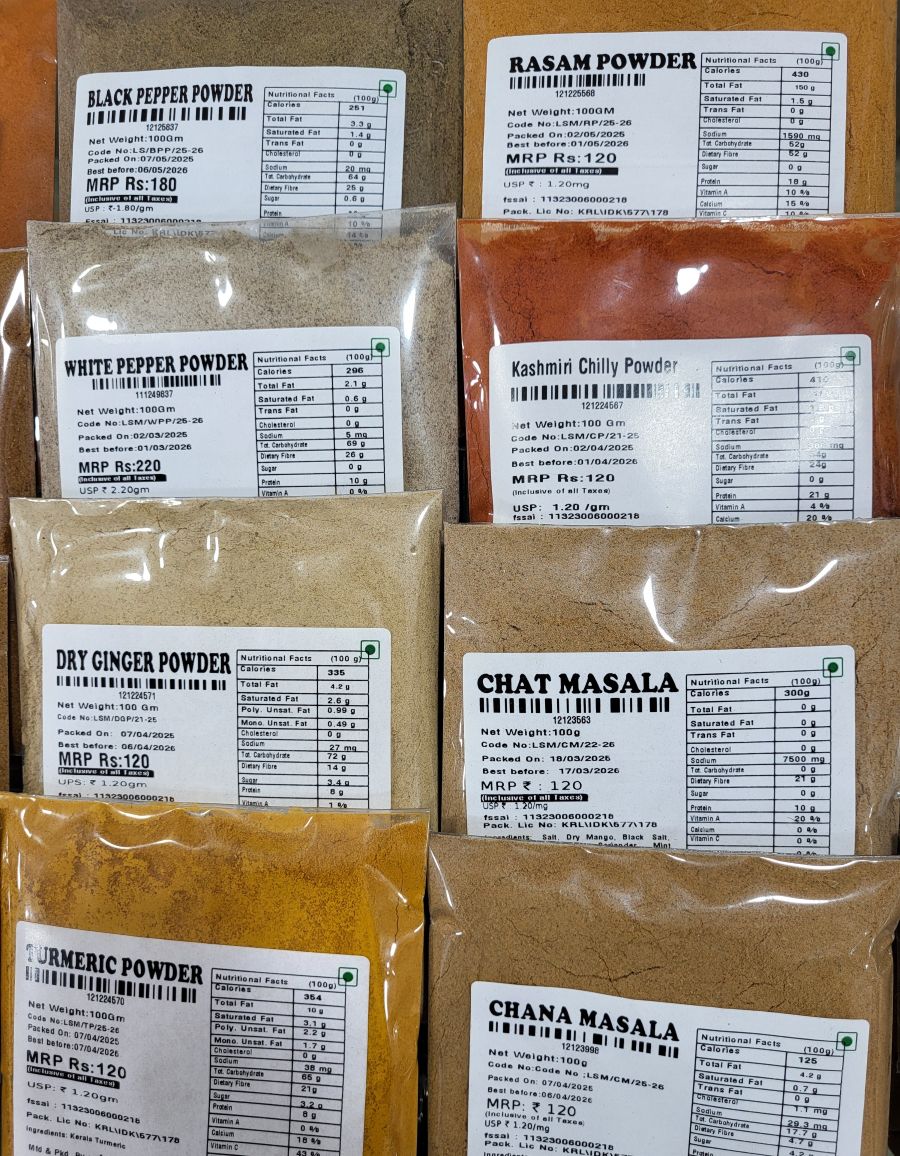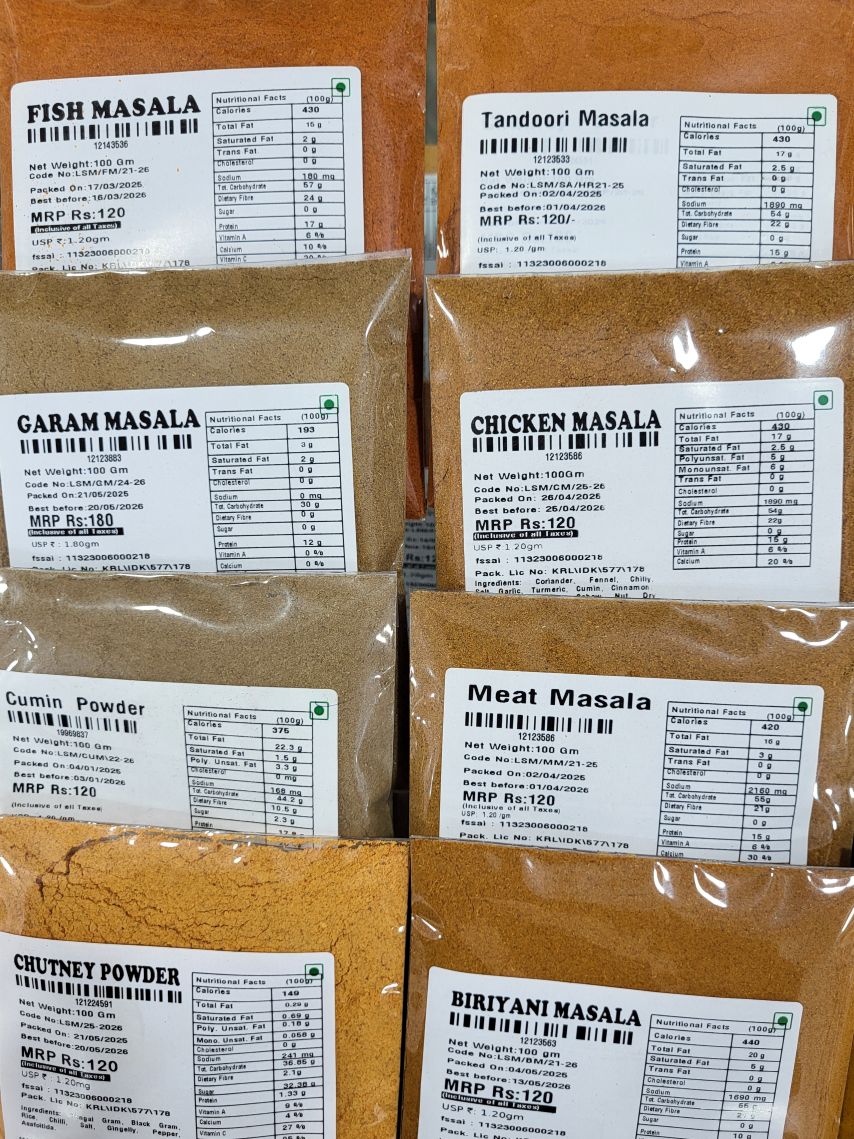Chutney Powder – चटनी पाउडर
Chutney Powder, often referred to by regional names like “Podi” (in Tamil/Telugu), “Pudi” (in Kannada), or “Chammanthi Podi” (in Malayalam), is a highly versatile and beloved dry condiment from South India. Unlike fresh chutneys that are wet and perishable, chutney powders are shelf-stable spice blends designed to be sprinkled on dishes or mixed with a little oil or ghee to form a quick accompaniment.
They are an essential part of many South Indian meals, particularly breakfast items, and are prized for their convenience, intense flavor, and often their nutritional value from lentils and spices.
Key Ingredients (Common Varieties):
The ingredients for chutney powder vary widely by region, family recipe, and the desired flavor profile. However, some common categories and examples include:
-
Lentils/Dals: These form the bulk and provide a nutty base and some texture.
- Toor Dal (Split Pigeon Peas): Very common, contributes a mild, earthy flavor.
- Chana Dal (Split Bengal Gram): Adds a slightly richer, nuttier taste.
- Urad Dal (Split Black Gram, skinned): Gives a unique aroma and slight stickiness.
-
Dried Chillies: Provide the spiciness.
- Red Chillies (various types): From mild Byadagi for color to spicier Guntur or local Kerala varieties like Kanthari for heat.
-
Aromatics and Spices:
- Cumin Seeds (Jeera): For warmth and earthiness.
- Coriander Seeds (Dhania): For a mild, citrusy, and earthy base.
- Asafoetida (Hing): Essential for its pungent aroma and digestive properties.
- Curry Leaves (Kariveppila): Dried and roasted, they add a distinct aromatic depth.
- Garlic: Dried garlic flakes or powder are sometimes included, especially in more pungent varieties.
- Sesame Seeds (Til): Adds a nutty flavor and richness.
-
Sour/Tangy Agents:
- Tamarind (dried): For a sweet and sour tang.
- Dried Amla (Indian Gooseberry): Used for a unique sourness in some regional blends.
- Dry Mango Powder (Amchoor): Less common in traditional South Indian versions but can be used.
-
Coconut (Dry/Desiccated): Especially popular in Kerala and Karnataka versions. When roasted, it adds a rich, sweet, and nutty flavor, but shortens shelf life slightly.
-
Salt: Crucial for seasoning and preservation.
Common Types/Flavor Profiles (examples):
- Idli/Dosa Podi (Molagapodi / Milagai Podi): Very popular, typically a mix of roasted lentils (urad dal, chana dal, toor dal), red chillies, sesame seeds, asafoetida, and salt. It’s usually served with idli or dosa, mixed with sesame oil or ghee.
- Curry Leaf Chutney Powder (Kariveppila Podi): Focuses on the distinctive aroma of curry leaves, often combined with lentils and spices.
- Garlic Chutney Powder: Features a strong garlic flavor alongside other spices.
- Coconut Chutney Powder (Thenga Chammanthi Podi): Made with dry roasted coconut, chillies, and spices. Often found in Kerala.
- Groundnut (Peanut) Chutney Powder: Popular in parts of Andhra Pradesh and Karnataka, made with roasted peanuts, chillies, and spices.
Preparation:
Making chutney powder typically involves:
- Dry Roasting: Each ingredient (especially lentils, chillies, and fresh curry leaves) is dry roasted separately until aromatic and crisp. This step is crucial for developing flavor and ensuring a longer shelf life.
- Cooling: All roasted ingredients are spread out to cool completely.
- Grinding: Once cooled, they are ground into a coarse or fine powder, depending on preference.
Culinary Uses:
Chutney powder is incredibly versatile:
- Accompaniment to Breakfast: The most common use is as a dry side dish for idli, dosa, appam, upma, or pongal. It’s usually served by mixing a spoonful of the powder with a little sesame oil, ghee, or even coconut oil (especially in Kerala).
- Flavoring Agent:
- Rice Mix: Can be mixed directly with hot steamed rice and a drizzle of ghee or oil for a quick and flavorful meal.
- Vegetable Stir-fries: A spoonful can be sprinkled over dry vegetable stir-fries or curries to add an extra layer of flavor.
- Snacks: Can be used as a seasoning for roasted nuts, dry snacks, or even sprinkled on sandwiches.
- Curries: Some people use certain chutney powders as a base or flavor enhancer for quick curries.
Convenience and Storage:
Chutney powders are highly valued for their convenience. They offer a quick and easy way to add flavor to a meal without the need for fresh ingredients or extensive preparation. When stored in an airtight container in a cool, dry place, they have a good shelf life, typically several weeks to a few months, depending on the ingredients (coconut-based powders might have a slightly shorter shelf life).
In Kumily, being in Kerala, you will find a rich variety of Chammanthi Podi, often featuring local spices and ingredients like dried coconut and pungent chillies, reflecting the region’s unique culinary heritage. You can expect to find freshly ground and aromatic options from local spice shops.
Disclaimer: The image displayed and the details printed on the label are for demonstration purposes only. Actual product specifications, including MRP, manufactured date, expiry date, weight, and ingredients, may differ or change over time. Please refer to the latest packaging for accurate information.
We’ve used images to give you an idea of what to expect. Feel free to call us at 8590303380 if you’d like more details.









Reviews
There are no reviews yet.